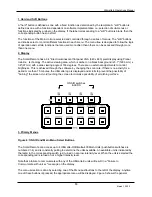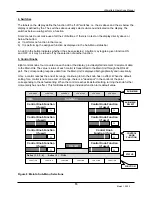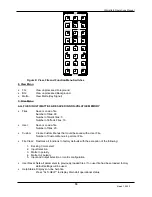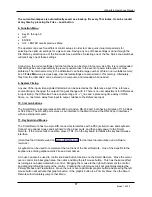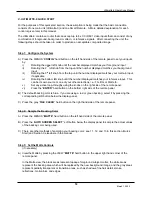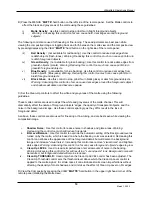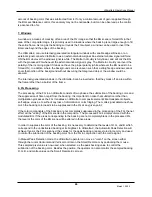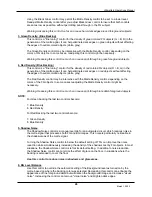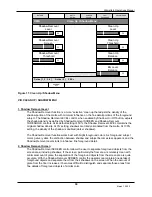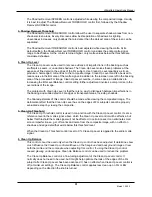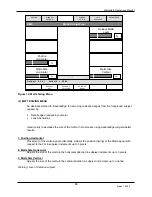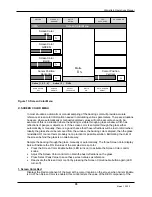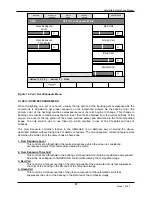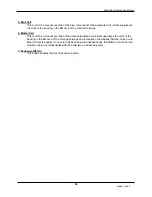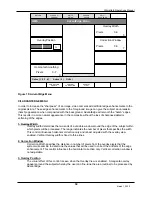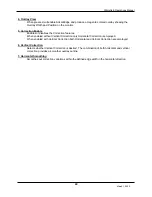
Ultimatte-9 Operations Manual
March 1, 2000
25
9. BG Veil Levels
Veiling is the term used to describe the discoloration of the BG scene in a composite image caused by
traces of the backing color in the processed FG. If the backing is a consistent color (R, G, B ratios track
from bright to dark parts of the backing), the automated circuits of the Ultimatte-9 will remove all traces of
the backing color in the processed FG. The Veil Controls menu provides a means for overriding this
automated function in order to compensate for slight inconsistencies in the color of the backing.
In the Ultimatte-9, the Veil controls are overrides of the automated suppression of the backing color.
Since the Automatic Peak Detection circuit sets the backing subtraction parameters for the purest and
brightest backing area, any variation in the purity of the backing color can cause veiling in the composite.
It may be possible to correct for this by using the Veil controls to override the automated functions.
However, if the FG subject passes in front of the purest areas of the backing, the edges of this subject will
darken. This is because more information is being subtracted from those edges than is necessary.
10. Flare Suppression
The suppression of flare or spill from the backing onto the FG subject is achieved by a set of algorithms
which analyze the colorimetry of the FG subject and set limits for the main backing color level as a
function of the levels of the other two colors. This kind of dynamic flare suppression is one of the most
distinctive features of an Ultimatte compositing process. Since matting requires a bright and highly pure
color for the backing, this intense color can cause discoloration of the FG subject in several ways. Flare in
the lens or internal camera optics may give the FG subject a colorcast. Bounce light or spill from the
backing will also discolor the edges of the FG subject. Flare suppression may affect the reproduction of
certain colors in the FG image, but has no effect on the generation of the matte signal.
In the flare suppression process, the level of one or both of the other two colors limits the main backing
color level. This limiting factor is variable to allow a certain amount of adjustment to the flare suppression.
The Ultimatte-9 has three controls that affect the overall flare suppression: White Balance, Gray Balance,
and Black Balance. Each of these three controls mainly influence certain parts of the FG Image, as
indicated by the control names.
As mentioned earlier, flare suppression may alter certain FG colors. In most cases, it is this alteration in
color that makes the FG to appear as if it was placed in front of a neutral (black) backing and not a
colored one. It is this alteration in FG color that makes the composite more realistic, free of any influence
from the backing color. In some cases, however, alteration of FG colors may not be acceptable. Rather
than completely disabling flare suppression, which will bring back all flare and spill from the backing,
Ultimatte-9's Flare Suppression algorithms allow selective and controlled disabling of the flare limiting
factor. This selective and controlled reduction of flare suppression allows these few "problematic" colors
to be reproduced; with addition of some flare on certain colors, yet maintaining full suppression on the
rest. Because of the selective nature of these flare controls they are called Color Gates. The Ultimatte-9
has three Color Gates: a combined GATE 1 / 3 (GATE 1 OR GATE 3), and GATE 2. For a detailed
description of these Color Gates on certain colors when used with Blue, Green or Red backing, see
Tables 3, 4, and 5.



